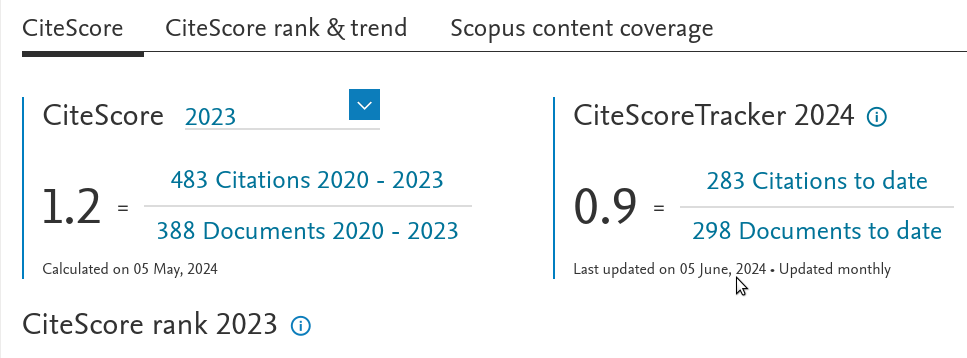Іммобілізація глюкозооксидази на сітку одностінних вуглецевих нанотрубок
DOI:
https://doi.org/10.15407/ujpe57.7.700Ключові слова:
-Анотація
При створенні біологічних сенсорів з використанням одностінних вуглецевих нанотрубок (ОВНТ) треба вирішити таку важливу проблему, як іммобілізація молекули, яка повинна розпізнати мішень, на поверхні нанотрубок. В даній роботі проведена іммобілізація ферменту глюкозооксидаза (ГОК) на поверхню сітки нанотрубок, яка була одержана шляхом осадження нанотрубок з їх розчину у діхлорбензолі за допомогою спрей-методу. У ролі молекулярного інтерфейсу було застосовано сукцинімідний ефір 1-піренбутанової кислоти (ПСЕ), біфункціональна молекула якого забезпечує хімічний зв'язок з оболонкою ферменту, а друга її частина (піренова) адсорбується на поверхню нанотрубки. Використання такого молекулярного інтерфейсу виключає, з одного боку, пряму адсорбцію ферменту на поверхню нанотрубки, яка знижує його активність, а з другого, забезпечує локалізацію ферменту поблизу нанотрубки. Порівняння спектрів резонансного комбінаційного розсіювання світла (РКРС) нанотрубок з їх спектром в оточенні ПСЕ вказує на створення наногібриду молекулою ПСЕ з нанотрубкою, що дає підставу для
подальшої іммобілізації ферментів. Оскільки спектри РКРС плівок ОВНТ:ПСЕ:ГОК суттєво не відрізняються від спектрів ОВНТ:ПСЕ, то можна стверджувати, що молекулярний інтерфейс ПСЕ достатньо міцно ізолює фермент від нанотрубки. Ефективна іммобілізація ферменту ГОК поблизу вуглецевої нанотрубки завдяки ПСЕ підтверджується за допомогою зображень, отриманих атом-силовим мікроскопом. Молекулярна динаміка дозволила встановити структури отриманих нанобіогібридів та енергії міжмолекулярної взаємодії між компонентами потрійного комплексу у водному оточенні. Було також досліджено провідні властивості сітки ОВНТ з адсорбованими молекулами ПСЕ та ГОК. Адсорбція молекул ПСЕ на сітку з ОВНТ супроводжується зменшенням провідності, яке, скоріш за все, пов'язано з появою розсіювальних центрів для носіїв заряду у нанотрубках.
Посилання
K. Balasubramanian and M. Burghard, Anal. Bioanal. Chem. 385, 452 (2006).
https://doi.org/10.1007/s00216-006-0314-8
G. Gruner, Anal. Bioanal. Chem. 384, 322 (2006).
https://doi.org/10.1007/s00216-005-3400-4
S. Roy and Z. Gao, Nano Today 4, 318 (2009).
https://doi.org/10.1016/j.nantod.2009.06.003
K. Besteman, J.O. Lee, F.G. Wiertz, H.A. Heering, and C. Dekker, Nano Lett. 3, 727 (2003).
https://doi.org/10.1021/nl034139u
X. Dong, C.M. Lau, A. Lohani, S.G. Mhaisalkar, J. Kasim, Z. Shen, X. Ho, J.A. Rogers, and L-J. Li, Adv. Mater. 20, 2389 (2008).
https://doi.org/10.1002/adma.200702798
P.W. Barone, S. Baik, D.A. Heller, and M.S. Strano, Nature Mater. 4, 86 (2005).
https://doi.org/10.1038/nmat1276
S.S. Karajanagi, A.A. Vertegel, R.S. Kane, and J.S. Dordick, Langmuir 20, 11594 (2004).
https://doi.org/10.1021/la047994h
R.J. Chen, Y. Zhang, D. Wang, and H. Dai, J. Am. Chem. Soc. 123, 3838 (2001).
https://doi.org/10.1021/ja010172b
S.G. Stepanian, V.A. Karachevtsev, A.Yu. Glamazda, U. Dettlaff-Weglikowska, and L. Adamowicz, Mol. Phys. 101, 2609 (2003).
https://doi.org/10.1080/0026897031000154284
W.E. Alvarez, F. Pompeo, J.E. Herrera, L. Balzano, and D.E. Resasco, Chem. Mater. 14, 1853 (2002).
https://doi.org/10.1021/cm011613t
C.P. James, B. Rosemary, W. Wang, J. Gumbart, E. Tajkhorshid, E. Villa, C. Chipot, R.D. Skeel, L. Kale, and K. Schulten, J. Comput. Chem. 26, 1781 (2005).
https://doi.org/10.1002/jcc.20289
A.D. MacKerell jr., D. Bashford, M. Bellott, R.L. Dunbrack jr., J.D. Evanseck, M.J. Field, S. Fischer, J. Gao, H. Guo, S. Ha, D. Joseph-McCarthy, L. Kuchnir, K. Kuczera, F.T.K. Lau, C. Mattos, S. Michnick, T. Ngo, D.T. Nguyen, B. Prodhom, W.E. Reiher, B. Roux, M. Schlenkrich, J.C. Smith, R. Stote, J. Straub, M. Watanabe, J.
Wiorkiewicz-Kuczera, D. Yin, and M. Karplus, J. Phys. Chem. B 102, 3586 (1998).
https://doi.org/10.1021/jp973084f
G. Wohlfahrt, S. Witt, J. Hendle, D. Schomburg, H.M. Kalisz, and H.-J. Hecht, Acta Cryst. D 55, 969 (1999).
https://doi.org/10.1107/S0907444999003431
V.A. Karachevtsev, S.G. Stepanian, A.Yu. Glamazda, M.V. Karachevtsev, V.V. Eremenko, O.S. Lytvyn, and L. Adamowicz, J. Phys. Chem. C 115, 21072 (2011).
https://doi.org/10.1021/jp207916d
W. Humphrey, A. Dalke, and K. Schulten, J. Molec. Graphics 14, 33 (1996).
https://doi.org/10.1016/0263-7855(96)00018-5
S.G. Stepanian, M.V. Karachevtsev, A.Yu. Glamazda, V.A. Karachevtsev, and L. Adamowicz, J. Phys. Chem. A 113, 3621 (2009).
https://doi.org/10.1021/jp810205a
C. Fantini, A. Jorio, A.P. Santos, V.S.T. Peressinotto, and M.A. Pimenta, Chem. Phys. Lett. 439, 138 (2007).
https://doi.org/10.1016/j.cplett.2007.03.085
S.K. Doorn, J. Nanosci. Nanotech. 5, 1023 (2005).
https://doi.org/10.1166/jnn.2005.170
S.G. Chou, H.B. Ribeiro, E.B. Barros, A.P. Santos, D. Nezich, Ge.G. Samsonidze, C. Fantini, M.A. Pimenta, A. Jorio, F. Plentz Filho, M.S. Dresselhaus, G. Dresselhaus, R. Saito, M. Zheng, G.B. Onoa, E.D. Semke, A.K. Swan, M.S. Ünlü, and B.B. Goldberg, Chem. Phys. Lett. 397, 296 (2004).
https://doi.org/10.1016/j.cplett.2004.08.117
M.S. Dresselhaus and P.C. Eklund, Adv. Phys. 49, 705 (2000).
https://doi.org/10.1080/000187300413184
A.M. Rao, P.C. Eklund, S. Bandow, A. Thess, and R.E. Smalley, Nature 388, 257 (1997).
S. Heinze, J. Tersoff, R. Martel, V. Derycke, J. Appenzeller, and P. Avouris, Phys. Rev. Lett. 89, 106801 (2002). https://doi.org/10.1103/PhysRevLett.89.106801
W. Kim, A. Javey, O. Vermesh, Q. Wang, and H. Dai, Nano Lett. 3, 193 (2003). https://doi.org/10.1021/nl0259232
##submission.downloads##
Опубліковано
Як цитувати
Номер
Розділ
Ліцензія
Ліцензійний Договір
на використання Твору
м. Київ, Україна
Відповідальний автор та співавтори (надалі іменовані як Автор(и)) статті, яку він (вони) подають до Українського фізичного журналу, (надалі іменована як Твір) з одного боку та Інститут теоретичної фізики імені М.М. Боголюбова НАН України в особі директора (надалі – Видавець) з іншого боку уклали даний Договір про таке:
1. Предмет договору.
Автор(и) надає(ють) Видавцю безоплатно невиключні права на використання Твору (наукового, технічного або іншого характеру) на умовах, визначених цим Договором.
2. Способи використання Твору.
2.1. Автор(и) надає(ють) Видавцю право на використання Твору таким чином:
2.1.1. Використовувати Твір шляхом його видання в Українському фізичному журналі (далі – Видання) мовою оригіналу та в перекладі на англійську (погоджений Автором(ами) і Видавцем примірник Твору, прийнятого до друку, є невід’ємною частиною Ліцензійного договору).
2.1.2. Переробляти, адаптувати або іншим чином змінювати Твір за погодженням з Автором(ами).
2.1.3. Перекладати Твір у випадку, коли Твір викладений іншою мовою, ніж мова, якою передбачена публікація у Виданні.
2.2. Якщо Автор(и) виявить(лять) бажання використовувати Твір в інший спосіб, як то публікувати перекладену версію Твору (окрім випадку, зазначеного в п. 2.1.3 цього Договору); розміщувати повністю або частково в мережі Інтернет; публікувати Твір в інших, у тому числі іноземних, виданнях; включати Твір як складову частину інших збірників, антологій, енциклопедій тощо, то Автор(и) мають отримати на це письмовий дозвіл від Видавця.
3. Територія використання.
Автор(и) надає(ють) Видавцю право на використання Твору способами, зазначеними у п.п. 2.1.1–2.1.3 цього Договору, на території України, а також право на розповсюдження Твору як невід’ємної складової частини Видання на території України та інших країн шляхом передплати, продажу та безоплатної передачі третій стороні.
4. Строк, на який надаються права.
4.1. Договір є чинним з дати підписання та діє протягом усього часу функціонування Видання.
5. Застереження.
5.1. Автор(и) заявляє(ють), що:
– він/вона є автором (співавтором) Твору;
– авторські права на даний Твір не передані іншій стороні;
– даний Твір не був раніше опублікований і не буде опублікований у будь-якому іншому виданні до публікації його Видавцем (див. також п. 2.2);
– Автор(и) не порушив(ли) права інтелектуальної власності інших осіб. Якщо у Творі наведені матеріали інших осіб за виключенням випадків цитування в обсязі, виправданому науковим, інформаційним або критичним характером Твору, використання таких матеріалів здійснене Автором(ами) з дотриманням норм міжнародного законодавства і законодавства України.
6. Реквізити і підписи сторін.
Видавець: Інститут теоретичної фізики імені М.М. Боголюбова НАН України.
Адреса: м. Київ, вул. Метрологічна 14-б.
Автор: Електронний підпис від імені та за погодження всіх співавторів.













